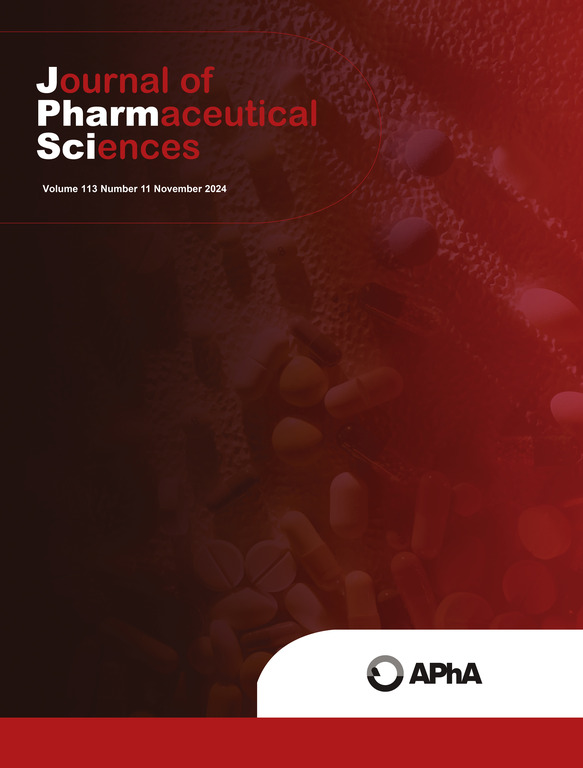Integrative population pharmacokinetic modeling of two BCMA-targeted and one CD19-targeted CAR-T therapies using full Bayesian inference with a student’s t-based M3 censoring approach for robust handling of outliers and BLQ data
IF 3.8
3区 医学
Q2 CHEMISTRY, MEDICINAL
引用次数: 0
Abstract
Background
Chimeric antigen receptor (CAR) T-cell therapies represent a novel class of adoptive immunotherapies characterized by dynamic in vivo expansion, contraction, and long-term persistence. These unique kinetic properties distinguish CAR-T therapies from traditional small-molecule and biologic agents and pose significant challenges for pharmacometric modeling, particularly due to high interindividual variability, frequent outliers, and a large proportion of concentrations below the lower limit of quantification (BLQ).
Objective
In this study, we developed and applied an integrated Bayesian population pharmacokinetic (PopPK) modeling framework to evaluate and compare the cellular kinetics of three CAR-T therapies: liso-cel (CD19-targeted), and ide-cel and orva-cel (both BCMA-targeted).
Method
Four modeling strategies were examined, combining two residual error structures (normal vs. Student's t) with two censoring methods (M1 vs. M3). Full Bayesian inference was implemented using Markov Chain Monte Carlo (MCMC) methods in NONMEM®.
Results and Conclusion
Our results demonstrate that M3 censoring is essential for preserving information from BLQ data and that the Student’s t-distribution offers superior robustness to outlier contamination compared to conventional normal error models. The combined use of M3 censoring and Student’s t residuals yielded the most accurate and stable parameter estimates across all phases of the CAR-T kinetic profiles. Additionally, comparative modeling under a unified Bayesian platform revealed both shared and target-specific kinetic features among the three therapies, with BCMA-targeted products demonstrating faster expansion kinetics than the CD19-targeted product. Our findings support routine use of the Student’s t–M3 configuration under a Bayesian framework for CAR-T PopPK modeling.
两种靶向bcma和一种靶向cd19的CAR-T疗法的综合群体药代动力学建模使用全贝叶斯推理和基于学生的M3审查方法,以鲁棒处理异常值和BLQ数据。
背景:嵌合抗原受体(CAR) t细胞疗法代表了一类新的过继免疫疗法,其特点是动态体内扩张、收缩和长期持续。这些独特的动力学特性将CAR-T疗法与传统的小分子和生物制剂区分开来,并对药物计量学建模提出了重大挑战,特别是由于高度的个体间变异性、频繁的异常值和很大比例的浓度低于定量下限(BLQ)。目的:在这项研究中,我们开发并应用了一个集成的贝叶斯群体药代动力学(PopPK)建模框架来评估和比较三种CAR-T疗法的细胞动力学:liso-cel (cd19靶向),ide-cel和orva-cel(都是bcma靶向)。方法:研究了四种建模策略,结合了两种残余误差结构(正常与学生t)和两种审查方法(M1与M3)。在NONMEM®中使用马尔可夫链蒙特卡罗(MCMC)方法实现了全贝叶斯推理。结果和结论:我们的研究结果表明,M3审查对于保存BLQ数据中的信息至关重要,并且与传统的正态误差模型相比,学生t分布对异常值污染具有优越的鲁棒性。M3滤波和Student’st残差的结合使用在CAR-T动力学剖面的所有阶段产生了最准确和稳定的参数估计。此外,在统一贝叶斯平台下的比较建模揭示了三种疗法之间的共享和靶向特异性动力学特征,bcma靶向产品显示出比cd19靶向产品更快的扩展动力学。我们的研究结果支持在CAR-T PopPK建模的贝叶斯框架下常规使用学生的t-M3配置。
本文章由计算机程序翻译,如有差异,请以英文原文为准。
求助全文
约1分钟内获得全文
求助全文
来源期刊
CiteScore
7.30
自引率
13.20%
发文量
367
审稿时长
33 days
期刊介绍:
The Journal of Pharmaceutical Sciences will publish original research papers, original research notes, invited topical reviews (including Minireviews), and editorial commentary and news. The area of focus shall be concepts in basic pharmaceutical science and such topics as chemical processing of pharmaceuticals, including crystallization, lyophilization, chemical stability of drugs, pharmacokinetics, biopharmaceutics, pharmacodynamics, pro-drug developments, metabolic disposition of bioactive agents, dosage form design, protein-peptide chemistry and biotechnology specifically as these relate to pharmaceutical technology, and targeted drug delivery.

 求助内容:
求助内容: 应助结果提醒方式:
应助结果提醒方式:


